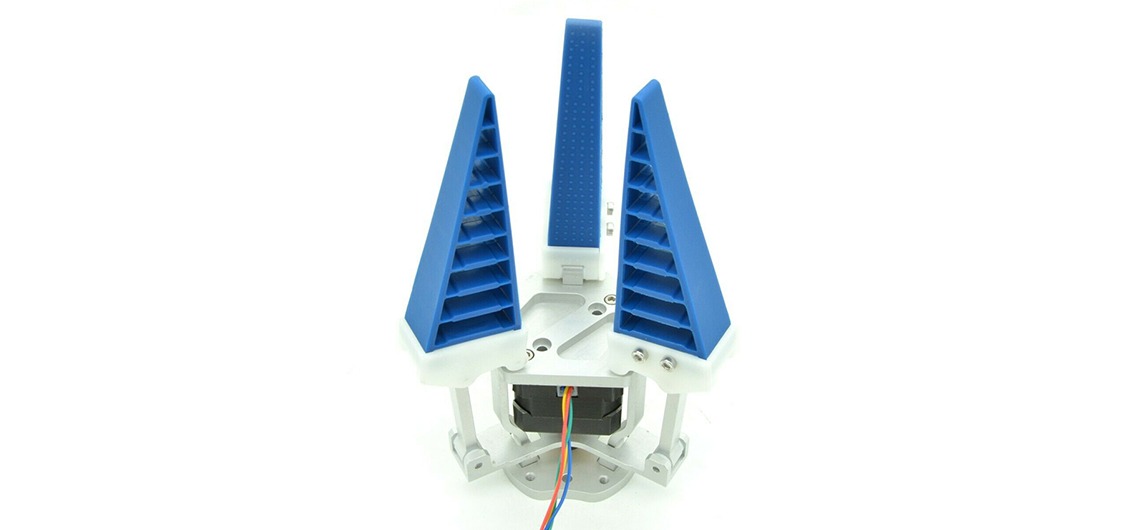Electric grippers execute highly accurate gripping force, position, and speed control that are difficult for conventional air units to carry out. Also known as servo-electric grippers, electric grippers are popular for many cobot applications such as machine tending and pick and place. Using an electric motor, electric grippers control the gripper’s fingers. Though electric grippers come in two-jaw and three-jaw configurations, the three-jaw grippers are usually the preferred choice for handling round or cylindrical objects such as bottles or tins.
While most electric grippers come equipped with microprocessors for varying gripping force and speed, it is the addition of a force sensor that allows electric grippers to determine the force necessary for each task. Since the electric motor current is directly proportional to its applied torque, the applied grip force can be controlled. The stroke of the jaws can be programmed to grip with a delicate touch for some and a strong grip for others. This means electric grippers are equipped to handle different part types easily.
The defining feature of electric grippers, though, may very well be their precision control. Unlike conventional grippers, electric grippers have the flexibility to use only the minimum clearance necessary to approach a part with the minimum stroke to pick it up. Additionally, the gripper can detect whether a part has been picked up with the help of encoders.
Detecting the grip is mandatory for error-proofing in many applications; doing so at the gripper level prevents other sensors from joining the loop, simplifying the integration and reducing overall costs by eliminating the need for magnetic sensors, their cord sets, or associated distribution blocks. Another obvious advantage of employing electric grippers is that no compressor is needed, improving efficiency while decreasing noise and expense.
An increase in demand for electric grippers has driven them to become more efficient, powerful, and faster than the first generation of electric grippers that came out over a dozen years ago. At that time, electric grippers were slow and fairly weak compared to similar-sized pneumatic grippers. However, the current generation of electric grippers can match, if not surpass, their air-driven counterparts in grip force and speed while also providing more data feedback.
For applications in which a controlled environment is necessary, such as a clean room, medical, or pharmaceutical applications, electric grippers are more desirable than pneumatic. And because some electric grippers yield more control and adjustability than pneumatic ones, more cobot users are turning to electric.
Why Choose PFA for Your Automation Solutions?
If your robot tooling needs to be able to pick up, manipulate, and place products with precision and control, you will need an electric gripper. PFA offers some of the highest force-to-weight ratio grippers to make your application a success. With so many types, sizes, and configurations on the market, it can be daunting when selecting the optimum electric gripper for your robot tool. Let us help you get a grip on your automation system by contacting us today or calling 262-250-4410.
Photo taken from i.ebayimg.com


